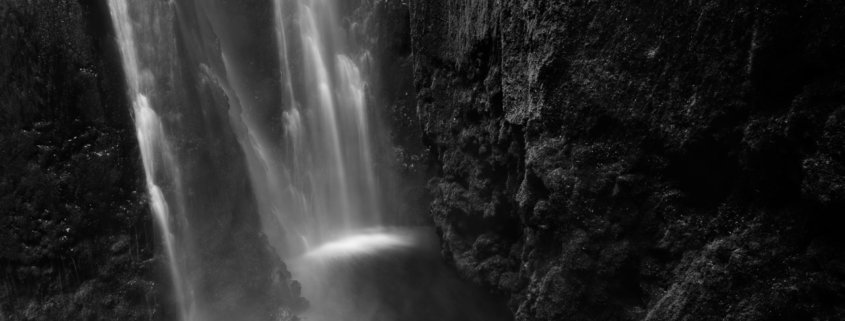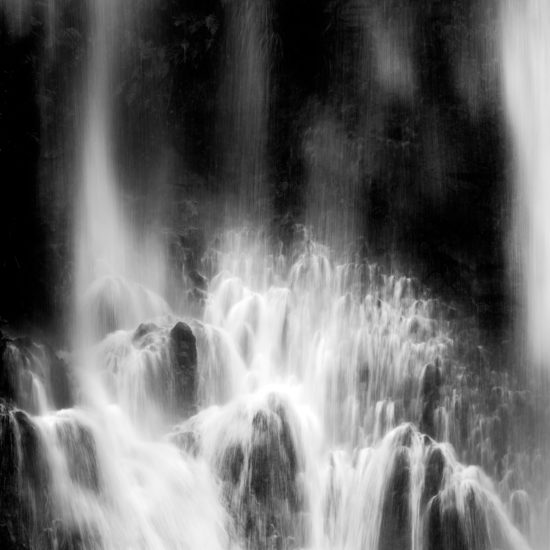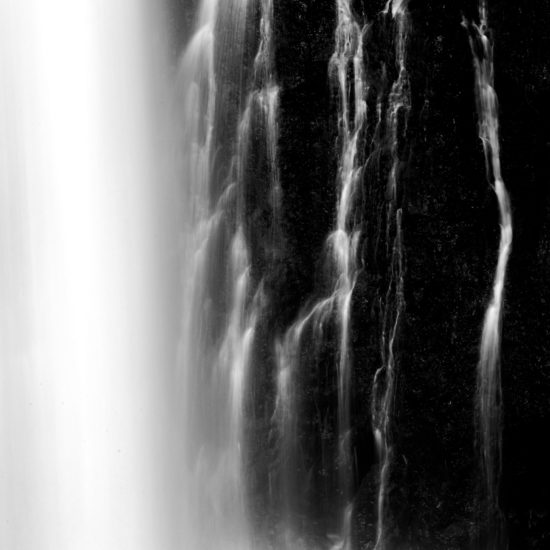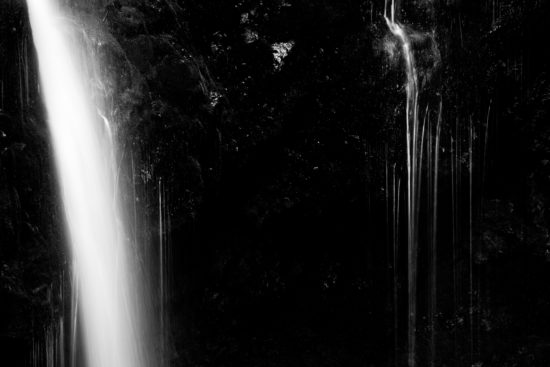Capturing Intimate Waterfall Photos
I love Maui and I shot it extensively in my previous visits. Locations like the Road to Hana are mesmerizing and full of photographic opportunities, mainly including water… a favorite subject of mine.
For my last visit a few weeks ago, I wanted a different take on the popular subject of tropical waterfalls. I was looking for something more unique, personal, and intimate; something outside of my comfort zone of wide colorful landscapes and seascapes. I wanted something that could improve my photography by learning new forms of expression.
Planning
Even before setting foot on the plane, I decided what (and how) I wanted to shoot. I did this by forcing a clear and unambiguous theme: Endless Falls. I decided to depict the endless and timeless falling of water, in an almost abstract quality, as a metaphor to which people could relate. Based on this, three rules quickly followed:
- Black and White – Monochromatic images evoke a timeless look that fits the theme perfectly.
- Reasonably long shutter speed – To abstract the flow, I would need a shutter speed long enough to blur the water.
- Long focal length – Longer focal lengths help isolate the subject within the waterfalls to avoid showing either the beginning or the end, hence evoking an “endless” motion
Once the idea of what I wanted to achieve was clear in my mind, I researched how other photographers have implemented some of the aspects on which I was focusing.
For example, I noticed that a shutter speed from 1/20s to 1/2s is usually enough to show motion while preserving some of the structure of the falling water. Structure and shapes are extremely important in black and white photography to produce a captivating image. Any shutter speed over 0.5 seconds would produce featureless streaks of water that, I noticed, were falling a bit out of fashion. I also noticed that I was more captivated by the more ‘contrasty’ black and white renditions, with large black areas to form the backdrops for white bright streaks.
I was ready to leave for Maui.
Execution
Armed with my “three rules” and a car big enough to carry my equipment (yet small enough for the narrow Road to Hana), I stopped at two very popular waterfalls in Maui: Waikani and Wailua.
When shooting black and white photos, it’s key to set the camera on the black and white picture settings; although the final RAW file contain all color information, the review images are in black and white. Even more importantly, on cameras with EVF, the preview image is in black and white while composing the shot. This helps enormously.
For all my Endless Falls images, I used a 70-400mm zoom, mainly at 400m, to isolate small portions of the waterfalls. I also took my time at each spot to work the locations and roam around, looking for the strongest compositions that would implement my vision.
I shot Endless Falls #1 at 210mm, f/5, 1/20s. Wailua is a tall, powerful, and very fast waterfall. A even faster shutter speed was necessary to keep the structure in the falls. I chose this composition to use the long streaks of water at the top as a frame for the smaller streaks formed by the rocks that were converging to the center bottom of the frame; this gives the eye a nice place to rest. The square composition evokes stability and symmetry.
I shot Endless Falls #2 again at 210m. This time, I chose a longer shutter speed of 0.4 seconds. This created the long streak on the left third to juxtapose to the shorter streaks on the right. The key to this image was making sure there was enough headroom on the highlights to keep structure and interest in the left side of the frame. To balance the image, the brighter portion is smaller (one third of the frame) than the darker portion (a generally good rule to follow).
Endless Falls #3 follows a similar theme to Endless Falls #2. It has a brighter, longer streak on the left against smaller streaks on the right. I loved the look of the right streaks (the third of the three bears). To zoom in tight, I shot this frame at 400mm with a shutter speed of 1/2s. This gave me the shapes I was after. The extensive black portions of the frame are broken up by the subtle rocks peaking in with small splashes of white. Again, the key is to preserve the structure of the left bigger streak with careful exposure.
Here are few images on Visual Wilderness that uses similar concepts to capture unique images of waterfalls around the world.
Conclusion
Forming a clear idea of what to shoot and planning the details (down to the details) even before leaving home helps produce a more coherent body of work. It also takes away most of the stress often associated to a reactive shooting style. Finally, it helps to push your photography boundaries in a more comfortable and pleasurable way by limiting the unknown variables; this keeps the excitement of exploring new fields and new techniques that can be later applied to different subjects and themes.










